One of the most common reasons for poor website ranking is not having taken the time to define a good website architecture.
An appropriate website architecture allows our pages to be organized and helps users find the information they need. Additionally, it establishes a solid foundation on which all the content of our website will be built.
In this article, I will show you how to define an SEO-optimized website architecture so you can offer the best experience to your users and also gain points with Google.
What is Web Architecture
Web architecture is the way a website is structured, meaning how its contents are organized and how its pages are linked together. The goal is to make navigating through the website easy for both users and search engines.
Why is a Good Web Architecture Important for SEO?
A correct web architecture affects how users and Google interact with our site, which directly impacts the web positioning of our pages.
Want to know why? I’ll explain below:
It Makes It Easy for Search Engine Crawlers
With a web architecture optimized for SEO, search engine robots will be able to reach every corner of your site.
Keep in mind that Google dedicates a limited amount of time to crawl each website (crawl budget), and if your site is not well-structured, you risk leaving important pages unvisited.
By designing your web’s SEO architecture, you will be laying out the path that search engine crawlers should follow when they enter your site, improving your crawl budget and refining the crawling process.
It Improves the Indexing and Ranking of Your Pages
A good web architecture also allows you to optimize the PageRank of your pages, meaning the authority you pass on to each of them.

By coherently linking URLs to each other, you indicate that those pages receiving more links are of greater importance, so Google will eventually give them more weight in its search results.
Además, estás relacionando semantically your content, and that helps search engines better understand your website and rank it within their rankings.
You Offer a Satisfying User Experience
The improvement in indexing provided by an SEO web architecture also has positive consequences for the user.
For example, when the user enters our website, they will be able to resolve their search intent more efficiently/effectively, as Google will have better understood the content architecture, and this will make us appear in the SERPs for more relevant and related keywords.
Additionally, through links in our content or via the menu, we will be inviting the user to explore other parts of our website that may interest them. This translates into greater retention:
- More time spent on the site.
- More pages visited.
- Lower bounce rate.
Moreover, it benefits our ranking because Google will consider our website truly useful for users.
Types of Web Architecture for SEO
When planning the architecture of a website, there are different options you can base it on. Let’s look at the most commonly used ones today.
Horizontal Web Architecture
In horizontal architecture, everything is linked from the homepage or the main menu and does not offer any type of hierarchy.

It could be appropriate for a small-sized website or a personal blog without categories, where all pages have the same importance.
But once your website has a certain volume of pages, it becomes less advisable as it makes it very difficult for the user to locate content.
Vertical Web Architecture
Vertical architecture presents highly hierarchical pages, with several categories and subcategories to classify the content.
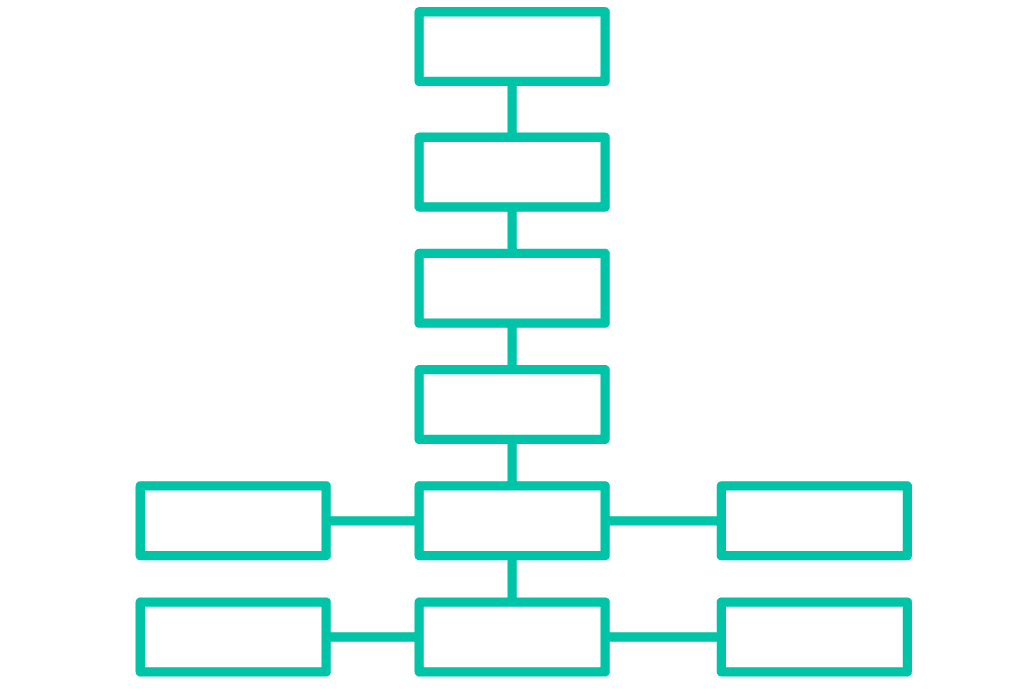
It is usually used for very large websites, especially online stores with a wide variety of products.
Despite its high level of organization, the main problem with this architecture is its considerable depth. The user has to click too many times to reach a page, and search engine bots have to make many jumps to index the entire site.
If you’ve navigated through Amazon’s categories, I’m sure you know what I mean.
SILO Architecture
SILO architecture is a mix of the two previous models that takes the best of each.
Content is organized into clusters or silos, with pillar pages that identify the main categories and under which the rest of the content is grouped.
However, there are usually no more than 3 levels of depth, so the growth of the website is horizontal, both in the number of silos and the pages that compose them.
Content is interlinked within the same silo, but not between different silos, thus reinforcing the thematic authority of the cluster.
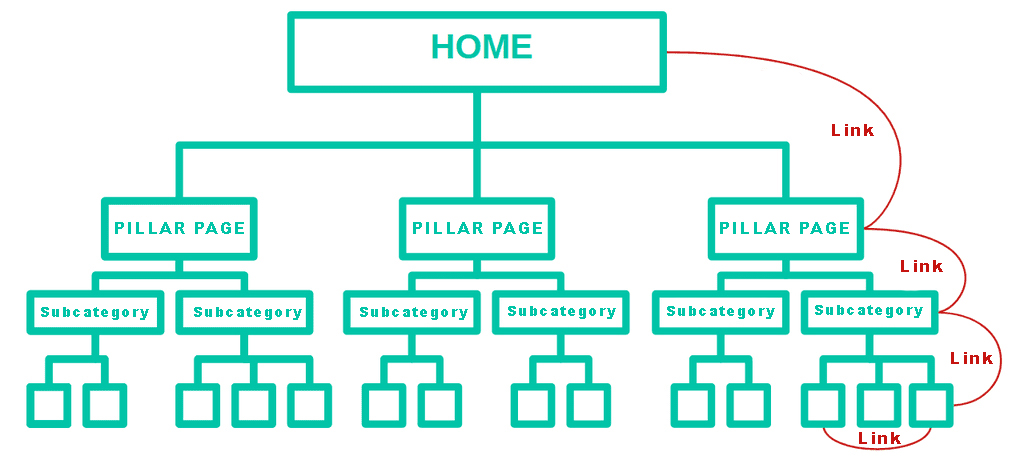
The SILO architecture is one of the most used in SEO, especially useful for a small ecommerce or any medium-sized website that has different thematic sections.
Hybrid Architecture
One of the main limitations of the SILO structure is that it doesn’t allow links between different groupings.
But why not link from one silo to another if it makes sense and enriches the content?
The hybrid architecture offers a solution to this problem, allowing for much more flexible linking.
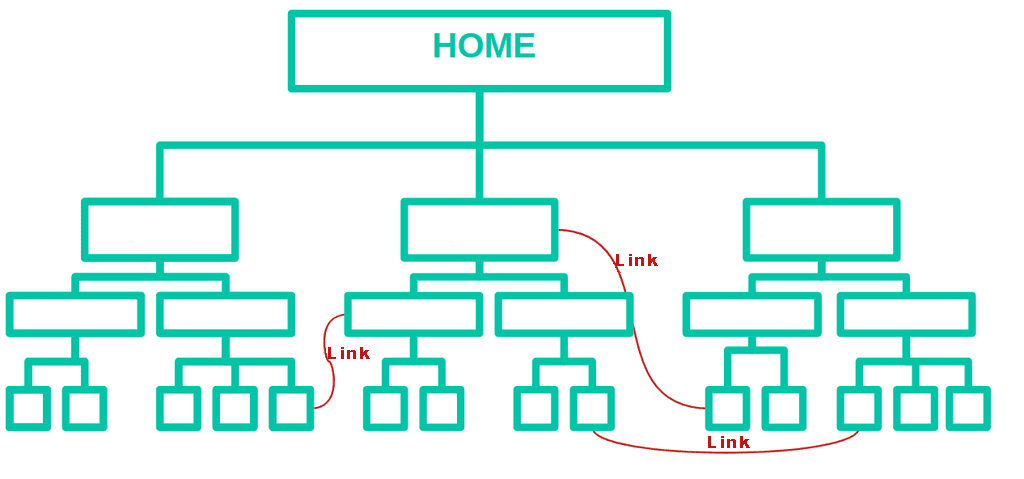
When used wisely, hybrid architecture is ideal for websites that have a blog where informational keywords of different topics are worked on.
Best Practices to Improve Your Website Structure
Now that you know the theory, let’s get into practice.
If you want to build an SEO-optimized web architecture, there are several tasks you should perform to ensure the best experience for both Google and your users.
Start with a Good Keyword Research
Keyword research plays a crucial role when designing the SEO architecture of our website.
We must know who our users are and what their needs are. This way, we can understand what they are searching for on Google, how they do it, and what they expect to find.
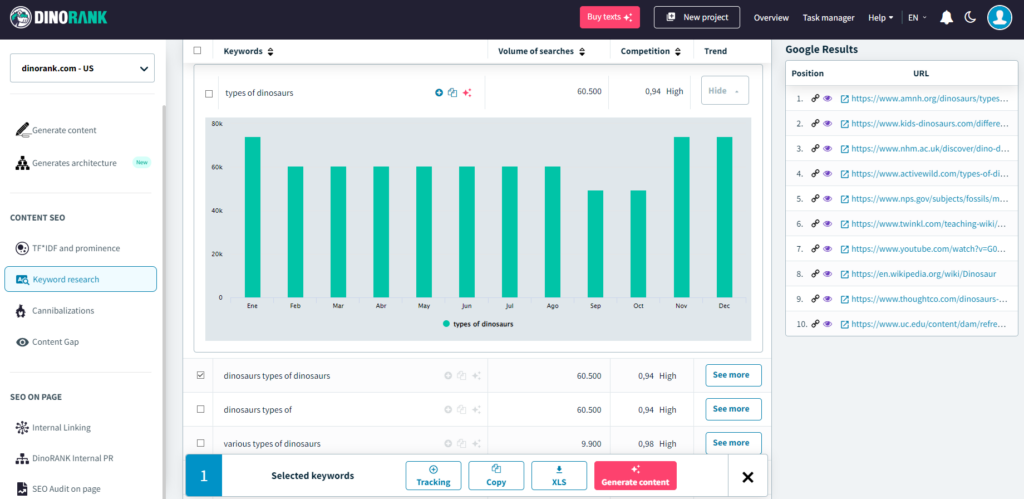
Additionally, we will identify semantically related searches and be able to group or relate the content to one another. We also cannot overlook what our competitors are doing.
Taking a look at the competition can reveal new groupings and topics to include on our website that we hadn’t considered before.
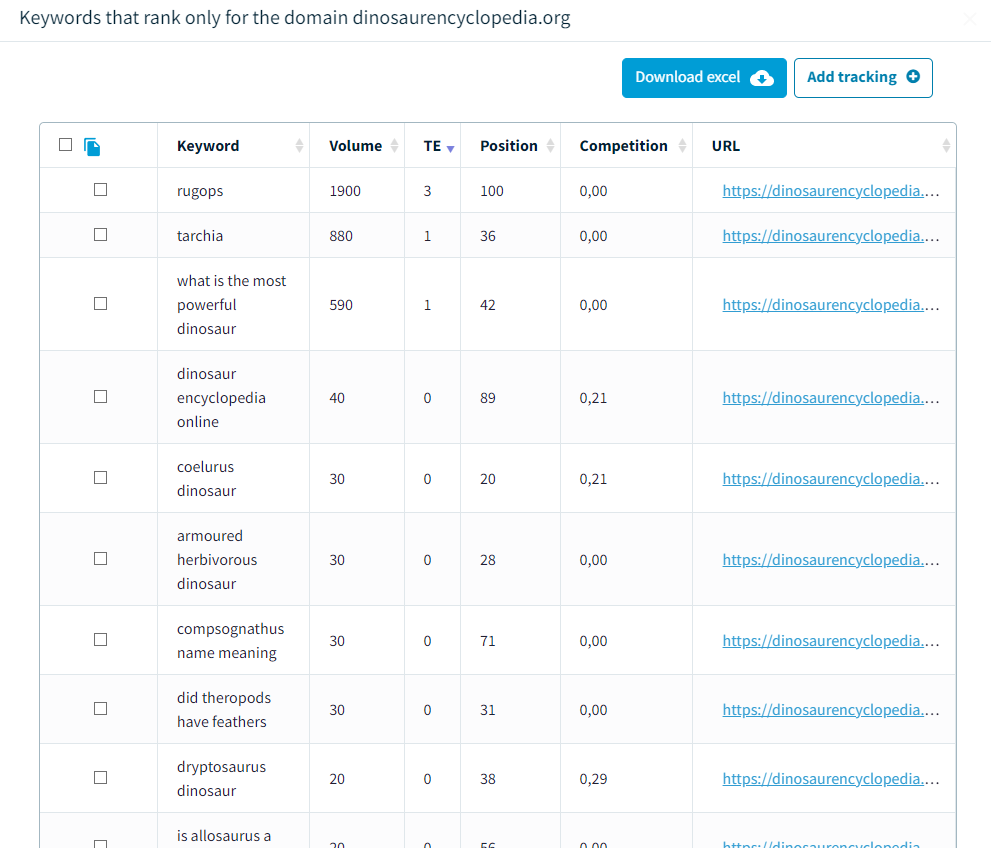
Design Your Web Architecture Model
With our list of keywords grouped thematically, it’s time to design the architecture of our website.
Sketch out the structure of your pages using a diagram design tool, such as Xmind or Draw.io. Define your main categories based on the most general keywords, divide into subcategories if necessary, and finally, add the final pages or posts.

When drawing your architecture, always think about the user. Make navigation easy with a simple organization and ensure that all pages are no more than 3 clicks away from the home page.
Define Internal Links
Internal linking should be a true reflection of your web architecture.
When you place a link between two pages on your website, you establish a relationship between them. Therefore, that link must be coherent and facilitate navigation through your site’s structure.

If your website has a hierarchy, child pages should be linked from their predecessors and vice versa. Additionally, you could include other links to contextualize certain content.
This way, you strengthen the PageRank of the most important pages, help Google crawl your site, and improve the user experience.
Lastly, make sure not to leave any orphan pages and use anchor texts to provide information about the destination of each link.
Set Up Your URL Structure
While it’s not mandatory, it’s often advisable for the URLs of your site to follow the logic of your web architecture.
This way, users can know at all times where they are just by glancing at their address bar.

You can achieve this same effect through breadcrumbs, which help improve navigation on the page and solidify internal linking within a hierarchy.

Design Your Navigation Menus
The navigation menu is perhaps the element that most helps users understand the structure of a website at a glance.
When designing a good menu, use your architecture as a reference and include the most relevant topics.
Remember that the menu is present on all your pages, so it helps reinforce internal linking and the distribution of PageRank.
But don’t lose sight of the user experience. Offer a clear and easy-to-navigate menu, with no more than two levels of submenus and few elements within it.
This way, the user will be able to navigate the most interesting parts of your website without complications.

Use XML and HTML Sitemaps
All SEOs know the importance of the XML Sitemap when it comes to telling Google which URLs of our site should be indexed.
Now, if in addition to helping search engines crawl your website, you want to offer more navigation ease for the user, you should consider creating a Sitemap in HTML format.
In WordPress, there are several plugins to create an HTML Sitemap automatically. Rank Math, for example, has an option for this.
But if you want to improve the user experience, I recommend making this Web Map by hand and giving it your personal touch.
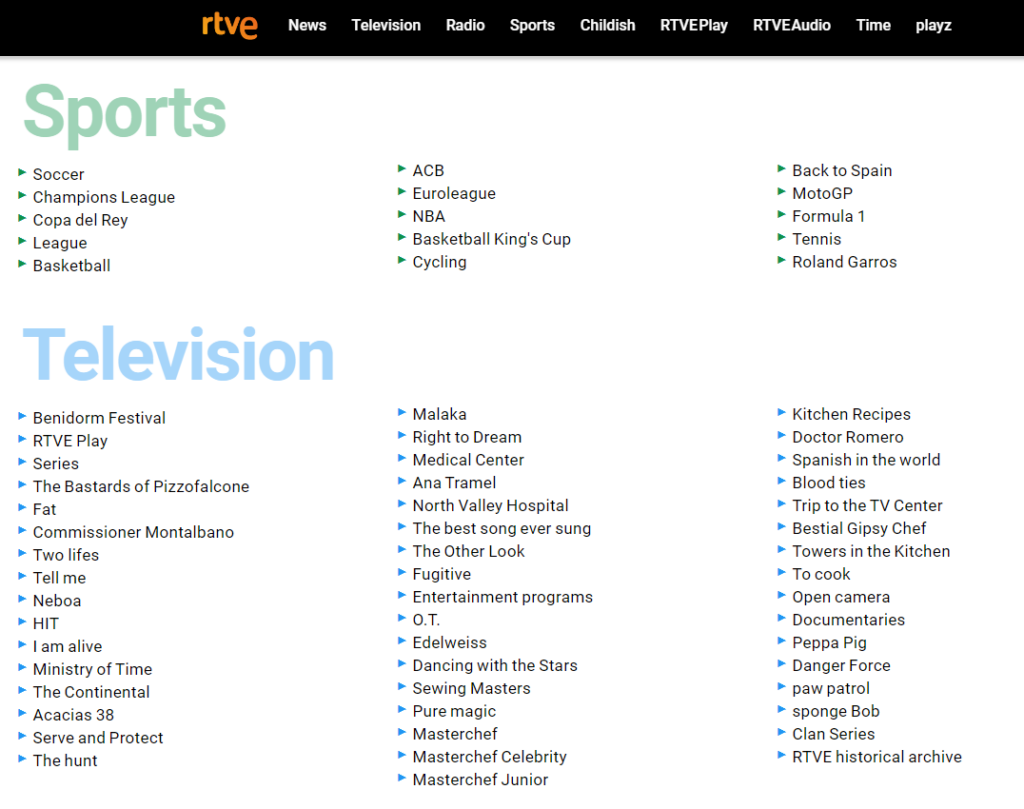
How to create an SEO-optimized web architecture automatically with DinoBRAIN
As you may have noticed, defining a good web architecture is a process that requires quite a bit of research and analysis.
But, what if you could automate a large part of this process?
DinoBRAIN, the artificial intelligence module integrated within DinoRANK, has a function that allows you to generate a website architecture with just one click.
The process is very simple. Let’s do an example for a website about dinosaurs.
Simply enter the theme of our website and press the button.
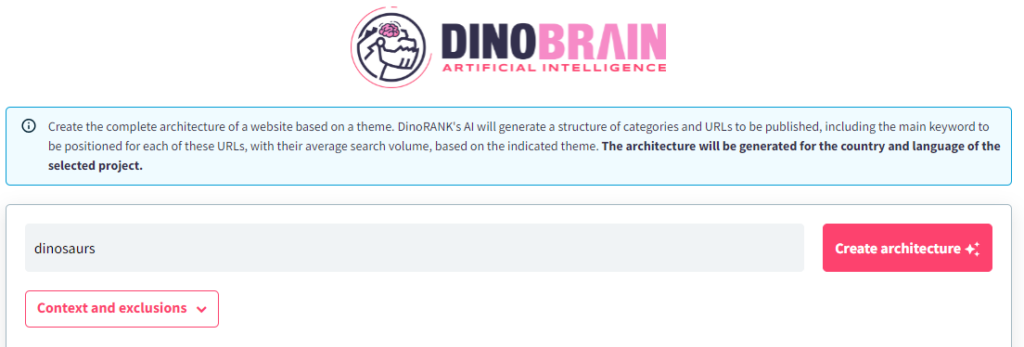
After a few minutes, we will see a possible architecture for the website on the screen, which we can expand to discover the proposed content hierarchy.
If you notice, DinoBRAIN has done the keyword research for us and designed the architecture model, along with the hierarchical internal linking.

In addition, it configures the URL structure to make it easy for users to understand.

And if we wanted to create some content, DinoBRAIN also allows us to generate it automatically.
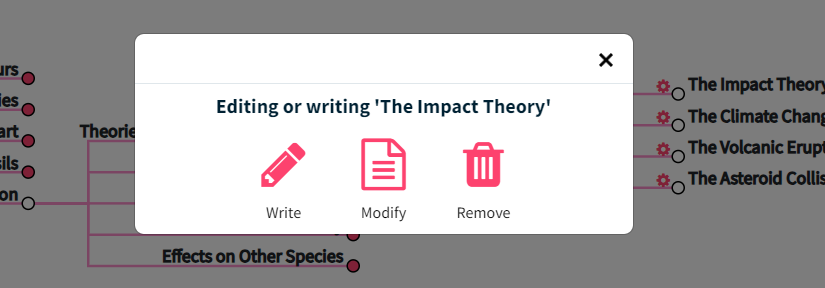
This architecture is perfectly optimized from an SEO perspective, as it is based on various analyses using DinoRANK’s SEO functions with AI.
So, is it ready? Can we upload everything to the website?
As I always say, any content generated with AI should be reviewed afterward. And this case is no exception.
For this, we can export the architecture to an Excel file and refine it there.

DinoBRAIN provides you with a solid structure in a short amount of time to start working on.
Defining a proper web architecture is a process that should be part of the initial phases of your SEO strategy.

